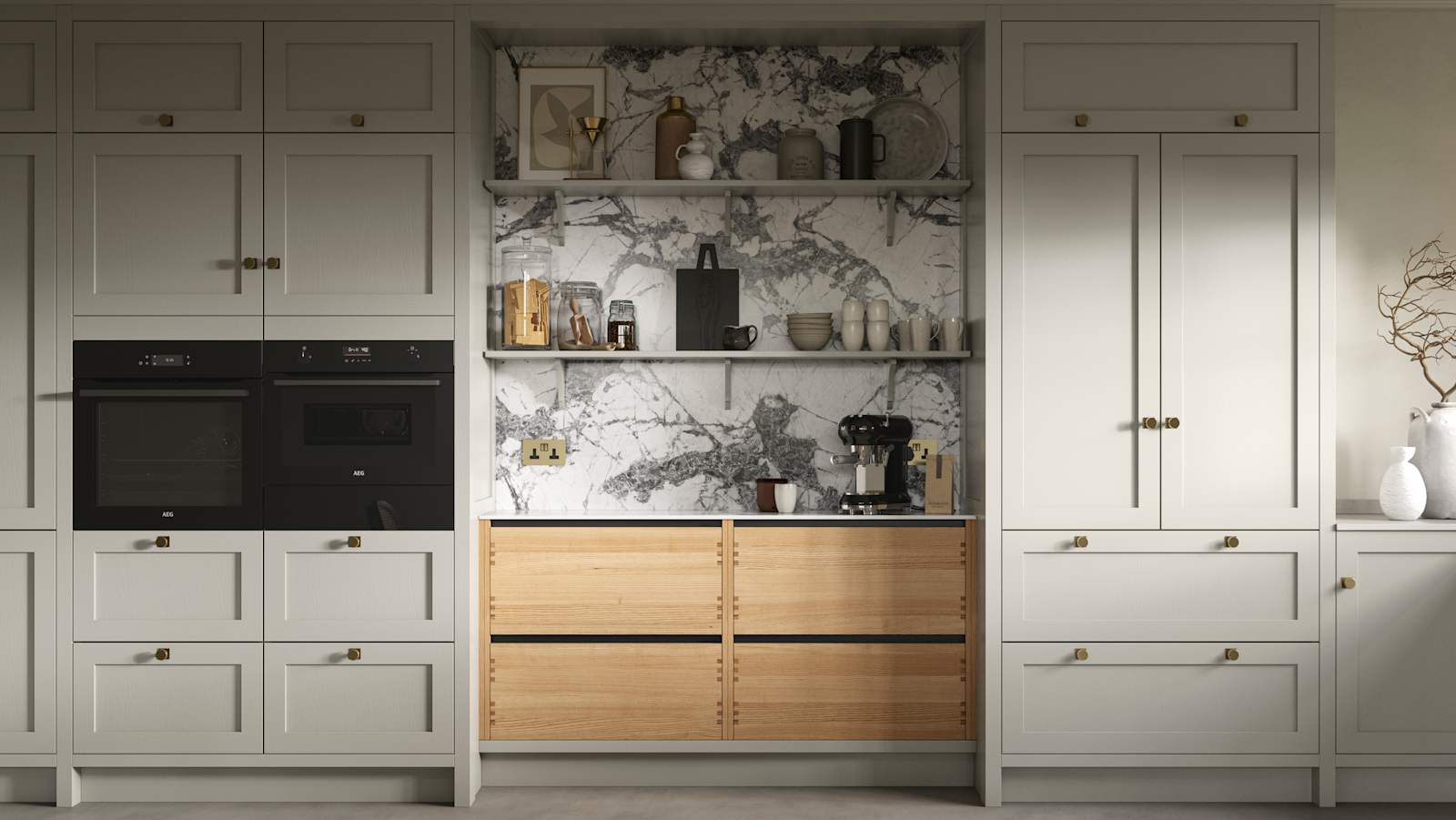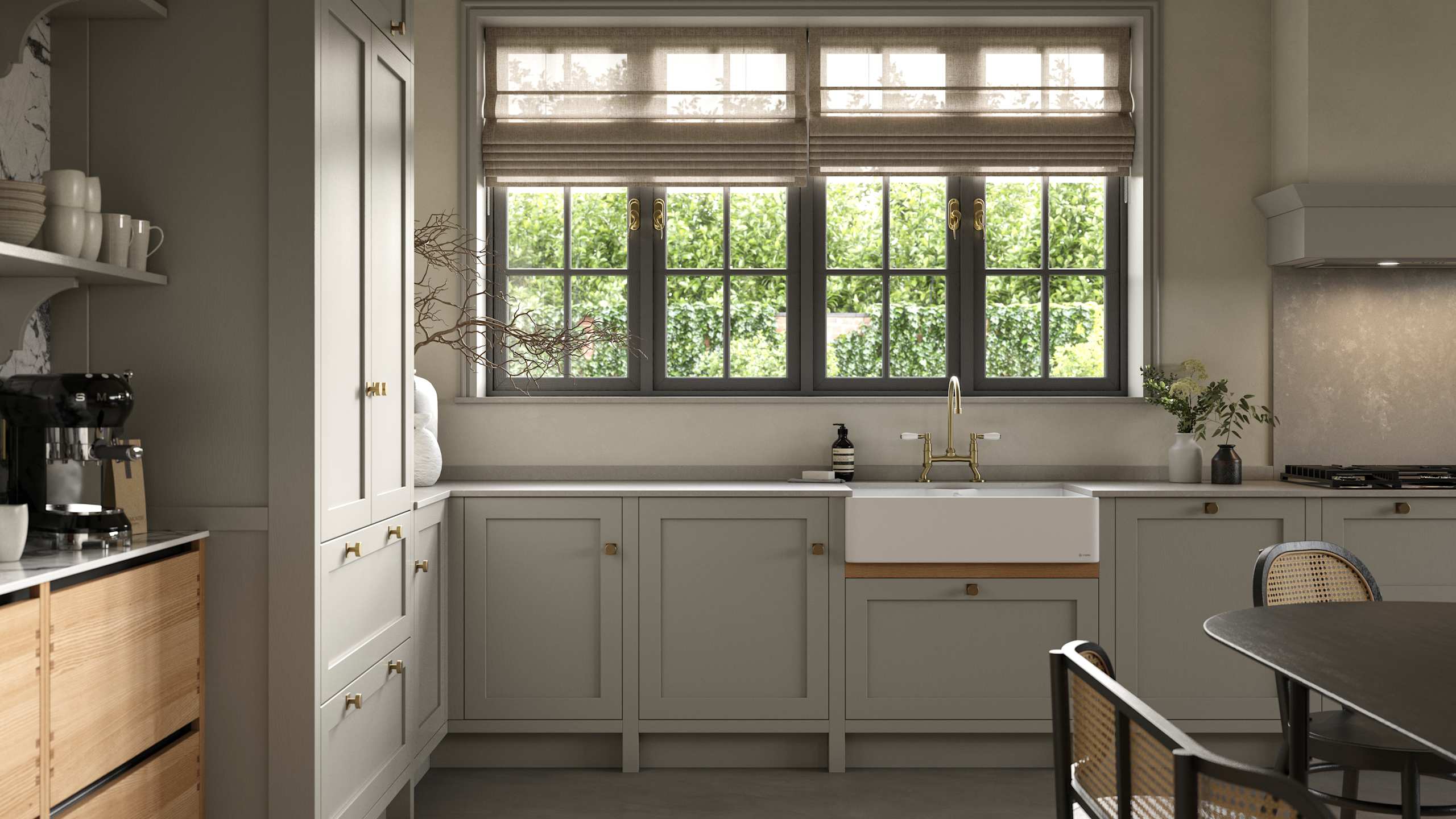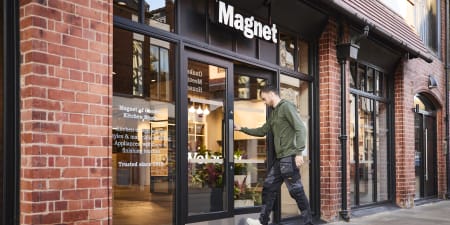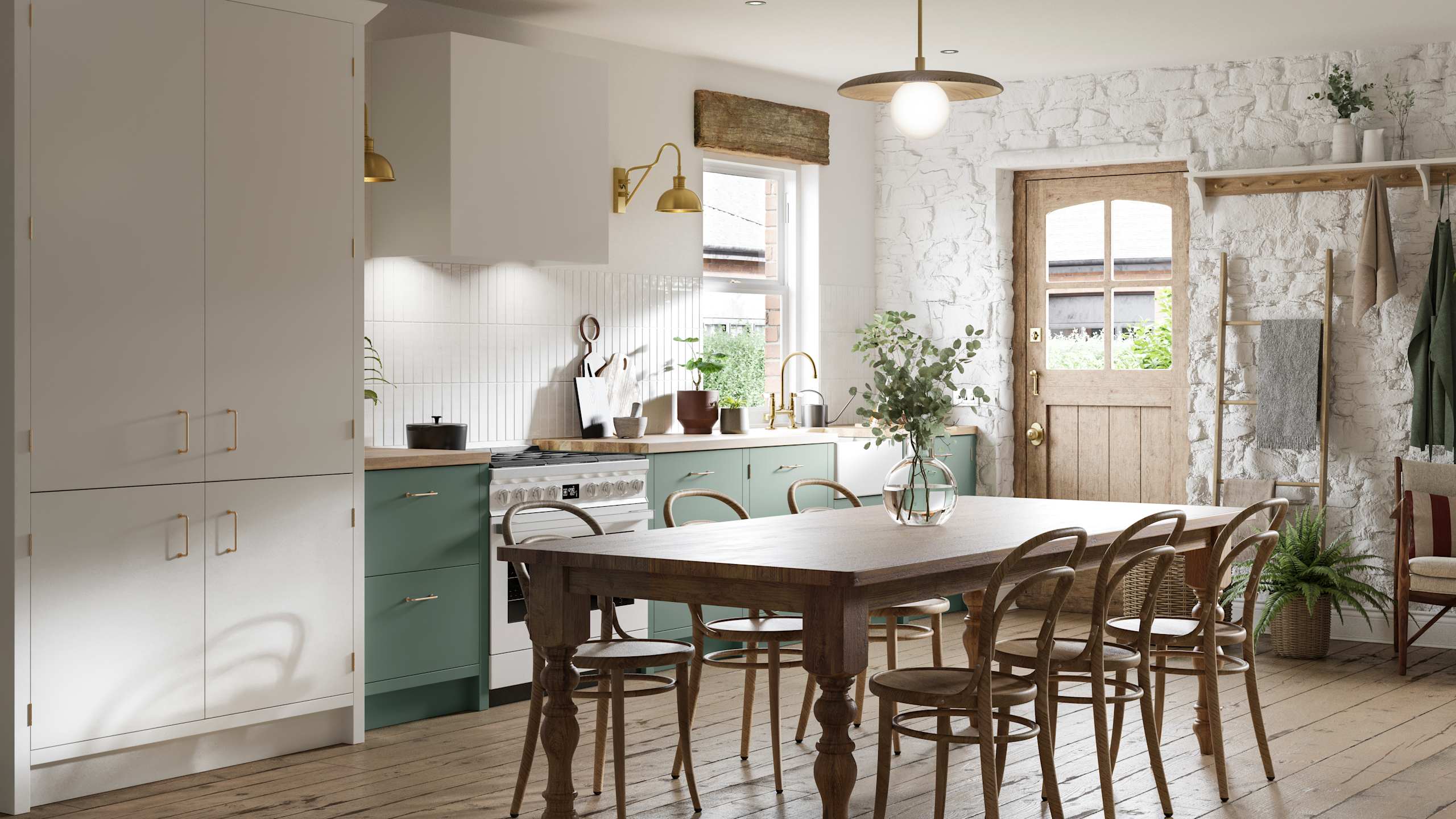A Guide to Mixing Kitchen Materials
There are well-loved examples of material mixes in traditional kitchen designs as well as those that challenge assumptions about how to blend surfaces in a kitchen space.

Wardley Pebble with Nordic Craft oak cabinetry
Discover all the ways you can create a cohesive look through intentional contrast.
Use complementing textures
There are many inspired material combinations that, together, are better than the sum of their parts. By mixing these kitchen materials you can create balance, form a distinctive style, or serve a functional purpose.
Concrete, brick and steel
The old factory and warehouse look - rarely does a single aesthetic offer so great an opportunity for mixing materials.
The effect you’re looking for from all your materials is raw and industrial. It’s where polished concrete floors meet matte concrete countertops and steel units and appliances. Exposed brickwork walls add colour, depth and character.
Featuring such durable materials, this is one mixed material example with a highly practical application as well as aesthetic appeal.

Ceramic and marble
Bright ceramic sinks and stone worktops are a traditional mixed-material combination. We’re all familiar with the classic look of a thick ceramic Belfast sink set within a marble - or marble effect composite - worktop.
These heavy-duty materials not only look stylish but are robust solutions for handling large and heavy cookware from stove to countertop to sink.
Using alternative kitchen sink materials is a wonderfully natural way to create diversity in your kitchen worktops and evoke entirely new kitchen styles.
For example, hammered copper sinks are brilliantly rustic and often associated with the farmhouse kitchen aesthetic, while a bright brushed copper sink set within a sleek black countertop exudes a high-end townhouse feel.
Cast iron and reclaimed wood
Cast iron and dark or reclaimed wood features are full of character and work perfectly in unison. Used as a major feature, these materials are reminiscent of a workshop, smithy, or Victorian scullery style of kitchen.
Depicted within a kitchen layered with rich darkwood cabinets, exposed brickwork and stone countertops, these features create a manor house look and feel.

Stone with high gloss lacquer or wood
A more contemporary conundrum among kitchen worktop materials is what to mix with a stone countertop surface: matte wood or high gloss cabinets.
On the one hand, materials like granite or marble will match well with a matte colour or neutral-toned wood cabinet. The granite or marble is the showstopping centrepiece, while the lowkey cabinetry beneath allows it to shine.
On the other hand, high gloss effect cabinetry, particularly in white, can add to the brilliance of stone surfaces like quartz.
Balancing matte and gloss effects is a key skill in applying mixed materials to your kitchen. One adds depth, while the other reflects light, and it's down to personal preference how you balance or bring out these features in the mix.
Choose your champion material
If you’re unsure where to start, it might be best to identify the most significant or impactful material in your kitchen design and use this as a foundational element.
The grain of a marble, quartz or granite countertop or the various colours of a brickwood floor allow you to pinch a variety of accent colours to use in differently textured complementary materials.
A large oak kitchen-dining table might be the kitchen centrepiece in position and function, around which other materials are more understated yet profuse.

Try cohesive colour schemes
While it’s not a foolproof fix, blending materials can be as simple as controlling colour variation.
The following formulae for colour and tone combinations bring together different materials, effortlessly drawing the eye from one to the other.
- Cool toned granite with steel fixtures and appliances
- Warm toned granite with copper utensils and pan handles
- Rich walnut worktops, deep brown panelled cabinets and leather stool seats
- Concrete countertops with a large industrial steel sink
- Ultra pale pink upper walls, gloss splashback tiles and displayed ceramic crockery
Or go all out with colour drenching
To blur the lines between different surfaces and textures, you can use the trend of “colour drenching” your kitchen in various hues of the same colour.
This includes matching metal fixtures, wall colours, crockery and cabinet surface colours in a variety of monochromatic shades.

Select metal features carefully
Some interior specialists consider it an error to mix more than two different metals in one room. And while there is no set rule, it’s a good idea to keep your metal choices contrasting (rather than matching) with one another, which certainly makes grouping more than two together a little more difficult.
This is because similar finishes can look like unintentional mismatches. Imagine antique brass next to brushed gold. For the same reason, it’s recommended not to leave one orphan metallic accent as it can look like a mistake or afterthought.
Another recommendation if you’re going to use mixed metals in your kitchen is to group metal finishes by function. For example, cabinet handles can differ from faucets.
Combine countertop surfaces
Mixing kitchen countertop materials doesn’t just create aesthetic appeal. The different textures offer a rich sensory experience in a single space. Winning worktop combinations include:
- A split marble or stone and hardwood island countertop to distinguish preparation and serving or seating areas
- Dark hardwood peninsular countertops connected to marble or stone surfaces in the rest of the kitchen
- A wooden butcher’s block atop a stone or granite countertop for a simple and temporary mix
- A reclaimed wood panel atop a solid concrete counter for a raw and industrial effect.


Use panelled appliances to tame the mix
When you consider how many materials already co-exist in your kitchen, it might be the case that you need to reduce rather than add more materials into the mix.
While it’s a considerable revamp for an existing kitchen, adding panelling to appliances to match your cabinetry can reduce the colour, tone and texture differences created by a mismatched dishwasher, fridge and washing machine.
































